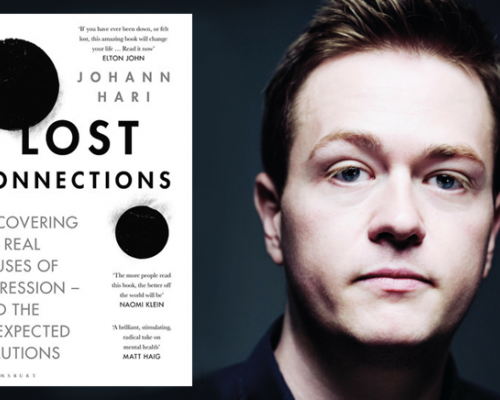Guidelines on the writing and use of case histories
1. Introduction
In recent years, in some areas of psychotherapeutic/psychiatric practice, such have been the constraints placed on the publication of case studies that, on the grounds of protecting client identity, their use has all but died out. One commentator recently described those case studies that continue to be produced in the above climate as “bland and anaemic” [1]. It is argued by some opponents of case studies that it is preferable to focus on reporting the findings of scientific research rather than on the results of individual cases.
However, as one advocate of case studies has pointed out, it is the case histories of 100 years ago that we remember today — “Anna O” being a case in point — rather than the science of the day, which is now seen to be at least partly spurious [2]. The Human Givens Institute believes that, given the value of the case study, its use should continue, providing that in each case properly informed consent is obtained and effective steps are taken to preserve client confidentiality/privacy, as set out in these guidelines.
Therapists should also note that it is possible to illustrate an aspect of therapy and its underlying principles and application without direct reference to an actual therapeutic episode (which is what a case study does). This approach avoids the issue of privacy and consent.
In general, human givens practitioners produce case studies (i.e. accounts of particular therapeutic episodes) to reflect successful treatments and publish these to illustrate the approach used and the outcome for the benefit of colleagues. Alternatively and equally valuable are accounts of therapy which have not succeeded.
These guidelines are mainly concerned with the kinds of case studies that can be defined as narrative case studies (or case histories) where the content is presented as events in an unfolding plot with participants (patient, therapist, significant others) and actions (presenting situation, treatment, outcome, etc).
Case studies are seen by the Human Givens Institute as valuable teaching tools in the context of courses of study, etc. Their purpose is to illustrate the successful application, or otherwise, of a therapeutic technique or approach.
A distinction is to be made between narrative case studies, as described above, and brief case illustrations/examples used in the context of verbal interaction during training, supervision and indeed therapy (e.g. ‘My friend John’ stories). The latter should be sufficiently condensed and generalised that they neither reveal confidential material nor require permission from anyone involved. Longer and more detailed case studies, however, need to be carefully anonymised and also require the consent of the client (see below).
In practice, case studies should include:
- A description of the client’s presenting problem and the initial context/circumstances of their case. NB: The focus should be on that which is essential to foster the reader’s understanding; incidental details which do not contribute directly to the reader’s understanding should be omitted;
- A description of the ‘trigger’ incident, for example a traumatic event, if applicable;
- The client’s symptoms and the resulting consequences/sequelae, for example detrimental effect on the client’s relationships and constraints on their mobility as a consequence of, for instance, trauma;
- In short, case studies should focus on a description of the problem and the relevant circumstances, the consequences for the client and/or others, the treatment provided and the outcome.
2. The Ethical Dimension
a) Informed Consent to Case Study
- If, at the end of therapy with a particular client, a therapist decides that it will be useful to produce a case study (i.e. an anonymised description of the therapeutic episode in question), they must seek the client’s written permission, taking care to explain that their identity will be protected by the means outlined in these guidelines (see below);
- A case study consent form is available on the professional members' area of this website and should be used for the purpose of obtaining the written permission of clients. Completed consent forms should be retained with client records;
- If permission is given, the therapist should produce the case study, suitably altered to eliminate any possibility of identification, and submit for publication. NB See notes on the protection of client identity and publication of case studies below;
- As part of the above process, it should be made clear to clients that they can, if they wish, see a copy of the proposed case study before it is submitted for publication. Where a client requests sight of a completed case study prior to giving permission, the therapist must provide them with a copy together with a copy of the case study consent form. Under no circumstances must a case study be published without the client’s written consent.
b) The Protection of Patient Identity
It is of paramount importance that the identity of clients who are the subject of case study reports is protected. The following guidelines and examples are to be observed by those writing and publishing case studies. Whilst some of these will be familiar precautions, others may be less obvious.
- To minimise the risk of identification, clients' names and the names of other participants in the case must be changed;
- Incidental information, such as the occupations of clients, their relatives or other key characters must be changed or, if they do not lend meaning to the narrative, omitted;
- Reference to locations or organisations that might assist identification must be changed or, where not essential to the narrative, omitted altogether. Examples here could be towns, other countries which the patient might have come from or visited, organisations used by the patient, etc.;
- It is good practice for therapists to consult their supervisor as to whether any proposed case study conforms to these guidelines, particularly the sections relating to informed consent and the protection of client identity.
In addition, where it is considered appropriate for the further protection of identity:
- The gender of patients and other participants in the case can be changed;
- The content of several similar cases can be combined to form a single case study, provided that the above guidelines are followed.
c) Publication of Case Studies
It is likely that the great majority of case studies produced by human givens therapists will be intended for inclusion in a human givens publication or on the HGI website. Consequently, the case studies concerned will be subject to the scrutiny of the relevant editor(s). However, where a case study is intended for a non-human givens publication such as a newspaper, newsletter magazine, journal, book, website, etc, the therapist concerned must consult with their supervisor in order to confirm that properly informed consent has been obtained and that the client’s identity has been protected in accordance with the guidelines set out in this document. If in doubt, the supervisor and/or the therapist must consult with the Registration and Professional Standards Committee (RPSC).
The guidelines concerning informed consent and the preservation of client identity also apply to audio or video recordings of treatment provided by human givens therapists intended for publication on websites such as YouTube, or in any other format.
d) The Responsibility of Editors and Publishers
Those responsible for producing / editing material for human givens publications (inc. newsletters, books, website content, etc) must satisfy themselves as far as possible through communication with therapists submitting case studies for publication, that informed consent has been properly obtained and that the possibility of a patient being identified has been eliminated through adherence to the above guidelines.
e) Clean Intentions
The Human Givens Institute suggests that therapists carefully examine their motives and intentions before producing case studies for publication. For example they should ask themselves the following question as it relates to their own needs:
- ‘Am I seeking to gain attention, raise my status or gain “payment” in any other way through the process, or am I on balance, seeking to extend human knowledge?
Also apply the ‘Can you look them in the face?' test:
- ‘Would I be able to show the case study to my patient in the knowledge that the account is fair and accurate and that their identity is adequately protected?'
f) Example of a Suitably Adapted Case Study
Scenario (necessarily fictitious for these purposes, but intended to represent an actual case)
Rob, a 32 year old retail manager is mugged whilst using his debit card to withdraw cash from the ATM at his local bank in Wigan last June. As a result he suffers severe PTSD symptoms (avoidance of banks, intrusive feelings and thoughts, angry outbursts, etc) and time off work which is leading to problems with his employer. In addition, his relationship with his 30 year old wife, Sylvia, a dental hygienist at a local practice, is being put under considerable strain. Rob's relationship with his six-year-old twin sons Alan and David is being adversely affected. Description of treatment and successful outcome along the same lines.
Case Study (derived from the above scenario and designed to protect client identity)
Alison, in her thirties and a mother of two, is mugged in broad daylight on her way to the post office. As a result she suffers severe PTSD symptoms (avoidance of the local shops, including the post office, intrusive feelings and thoughts, angry outbursts, etc) and time off work which is leading to problems with her employers. In addition, her relationship with her husband, John is being put under considerable strain and she is finding it difficult to deal with her daughters because of the angry outbursts. Description of treatment and successful outcome along the same lines.
g) The Health Professions Council’s View on Client Confidentiality
The following extract summarises the position of the Health Professions Council (HPC) with regard to the confidentiality of clients. The HGI endorses the principles contained in this statement, both in relation to case studies and with regard to wider issues of client confidentiality.
“Standards of conduct, performance and ethics — duties of HPC's registrants
“2. You must respect the confidentiality of service users.
You must treat information about service users as confidential and use it only for the purposes they have provided it for. You must not knowingly release any personal or confidential information to anyone who is not entitled to it, and you should check that people who ask for information are entitled to it. You must only use information about a service user:
- to continue to care for that person; or
- for purposes where that person has given you specific permission to use the information.
You must also keep to the conditions of any relevant data protection laws and always follow best practice for handling confidential information. Best practice is likely to change over time, and you must stay up to date.”
Notes. 1. All in the Mind, BBC Radio 4, April 2007 2. Ibid.
Last reviewed: April 2024
Explore our articles and interviews
Latest Tweets:
Tweets by humangivensLatest News:
HG practitioner participates in global congress
HG practitioner Felicity Jaffrey, who lives and works in Egypt, received the extraordinary honour of being invited to speak at Egypt’s hugely prestigious Global Congress on Population, Health and Human Development (PHDC24) in Cairo in October.
SCoPEd - latest update
The six SCoPEd partners have published their latest update on the important work currently underway with regards to the SCoPEd framework implementation, governance and impact assessment.
Date posted: 14/02/2024











